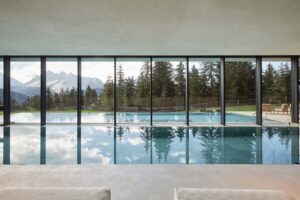
FORESTIS – A Luxury Eco-Conscious Retreat
FORESTIS is a luxury, eco-conscious retreat nestled in the beautiful Dolomite Mountains of Italy.
Kenya
Mood of Living November 3, 2016
Cottar’s Safaris is a Kenyan camp preserving and protecting natural biodiversity. Nearly a century ago, Charles Cottar, an Oklahoman adventurer, was so moved by Teddy Roosevelt’s tales of safari that he voyaged to Africa and decided to stay. He moved his family to the continent and quickly became one of the top professional hunters and safari guides in Africa.
Charles’ grandson Calvin has been coming to the same stretch of the Maasai Mara plain since his childhood. In 1998, Calvin and his wife Louise built Cottar’s 1920s Safari Camp as a private conservancy, innovatively protecting the region’s natural biodiversity while simultaneously offering guests contact with the local Maasai culture. Each morning at Cottar’s Safari begins with a warm cup of coffee near the fireplace, followed by photographic game drives across the Maasai Mara and into the Serengeti plains. For Calvin, Cottar’s is a place to capture the spirit of the unspoiled African landscape while remembering that “the safari is the journey to the destination.”
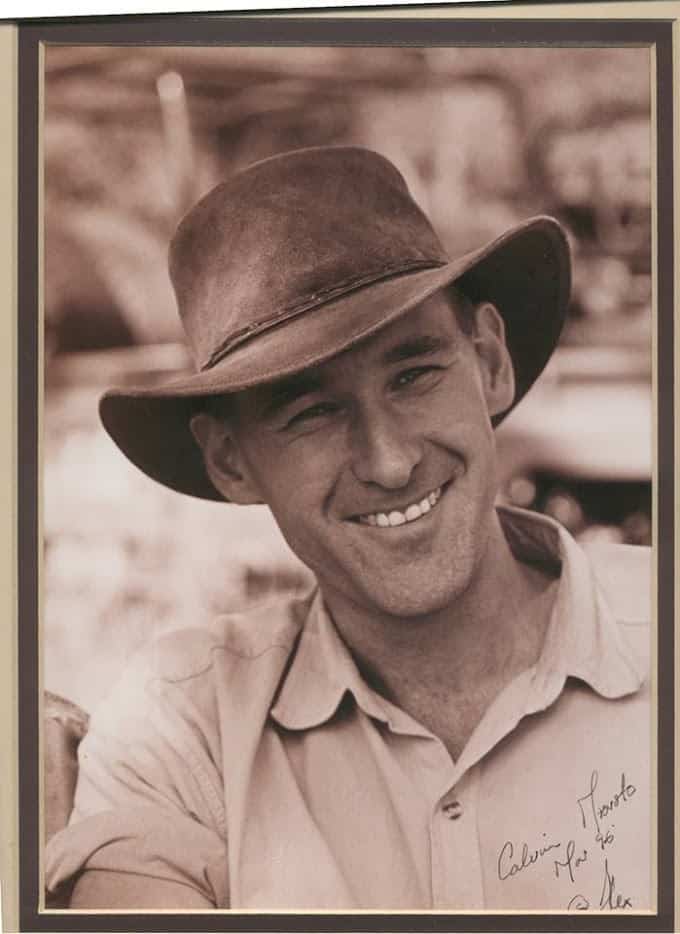
Mood of Living: What was it like growing up with the original safari family?
Calvin Cottar: The pressure to follow in the folks’ footsteps was high, but it was an easy choice the more I was in the business. It’s all I have ever done so it hardly feels like I am working!
MoL: Can you give a brief history of Cottar’s Safari Service?
C.C: My great grandfather Chas arrived for a hunting safari in British East Africa in 1909 after reading Teddy Roosevelt’s book African Game Trails. He moved his family over from Oklahoma. All of his sons (Mike, Bud, and Ted) were doing safaris 20 years before the Blixen/Denys Finch Hatton era of ‘Out of Africa’ fame. They outfitted and guided hunting safaris all over Africa, India, and Burma. They also filmed safaris, including the famous American adventurers’ Martin and Osa Johnson of ‘I married Adventure’ fame’, George Eastman of Kodak, Paul Hoeffler of ‘Africa Speaks’, and the royal family of Great Britain. My parents Glen and Patricia Cottar continued the pioneering spirit. In between operating hunting safaris all over Africa, they opened the very first permanent tented safari camp exclusively for photographic clients in Tsavo East in 1964… everyone thought they were crazy at the time! They followed up with subsequent tented camps in Kimana, and the Maasai Mara. I started the current Cottar’s 1920s Mara Safari Camp in 1998 together with my wife Louise.
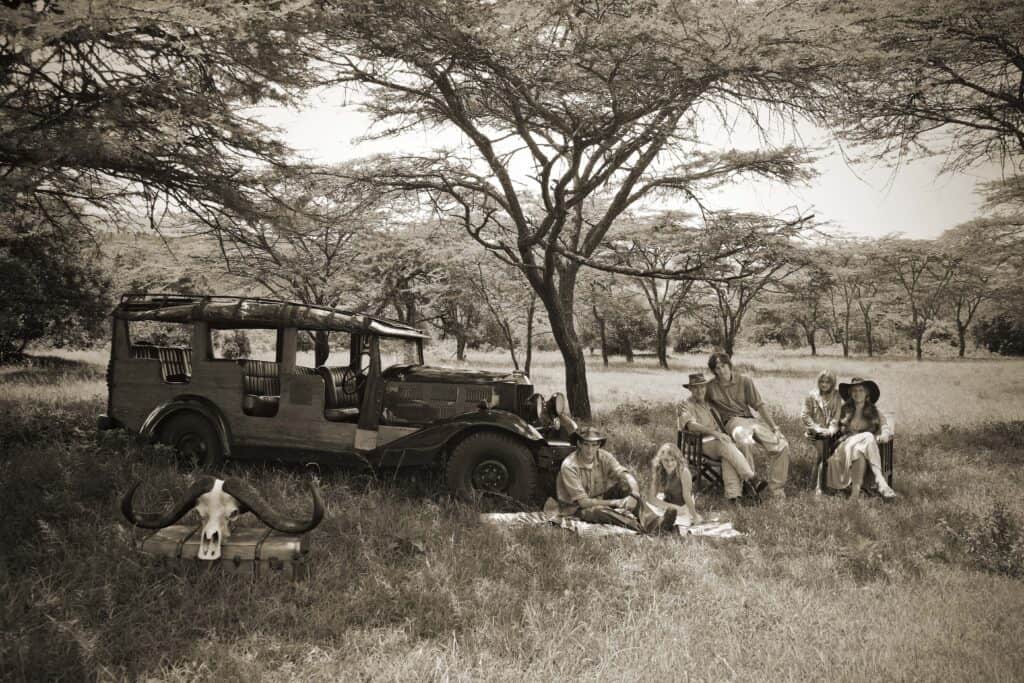
The Cottar family.
MoL: What inspired you and your wife Louise to create the 1920s Camp?
C.C: We wanted to give people the truth about Africa, which is not only about the quality of the accommodations but also the depth of knowledge and interpretive ability of our excellent guides.
MoL: What are the core values behind Cottar’s Safari Service that make it so unique?
C.C: We are not in the tourism business just to make money, so we see it rather as a lifestyle choice. We strive to have our guests see a safari as a life-changing experience they will never forget and to keep coming back. We see that we can be an agent for change in how wildlife conservation is practiced, particularly through the ‘leasing of land for wildlife’ concept that we and other members of the Maasai Mara Wildlife Conservancies Association are implementing.
The accommodations at the safari camp.
MoL: Can you describe a typical day as a private guide?
C.C: Wake early, get out there, and follow our instincts. I always work with my loyal trackers as to where the game might be, and once we have found them we tap into our natural hunting instinct by anticipating what they will do next… and get our guests positioned for the best pictures and experience. We always carry food and water so we don’t have time limits.
Also, walking is something we do which is a far deeper experience. We interact with wildlife as human beings that the wildlife fears, not as part of an inanimate vehicle that they do not fear… so with walking, one has to be far more aware, as many large animals, such as buffalo and elephant, have fear responses to humans that involve aggression. We have enough knowledge and understanding of the animals to avoid actually risking life.
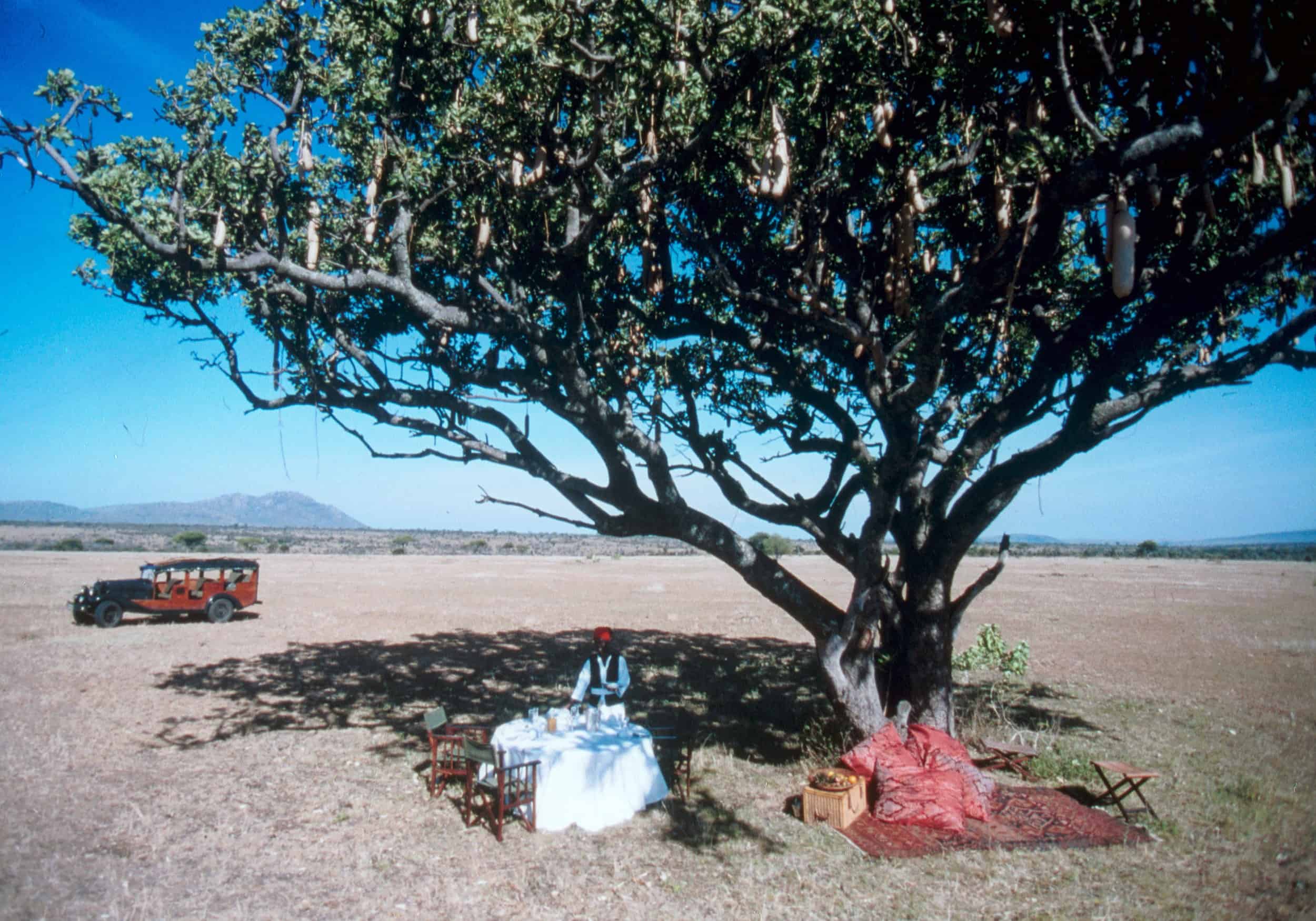
Breakfast at Cottar’s camp.
MoL: What are some of the challenges that you face while out in the wild?
C.C: In providing true wilderness experience to our clients in Kenya and the Mara, we have to work extra hard to keep mass tourism out of the areas we use around Cottar’s camp- so far we are succeeding!
In the marketing of safaris to Africa, we struggle with the perception in the US and Europe that Kenya and African are dangerous destinations, when in fact they are not. Indeed, I have not seen a safer place in the world because we bring livelihood income and benefits to hundreds (maybe thousands) of local Maasai who ensure that we are protected and safe.
In terms of wildlife conservation, it is clear that we need to have a paradigm shift to stall the current losses of wildlife, which currently stand at 3.3% per annum. This loss of wildlife is not due to the often-touted poaching problem you hear about in the west, but due to land use change to other crops that landowners can own and make a living off of. Because wildlife is state-owned, landowners cannot commoditize it or use it legally, therefore they have no choice but to remove or replace it. A good indication of this trend is the statistic that agriculture is increasing at 8% per annum at the cost of wild habitat, while the continued presence of wildlife causes losses of up to 60% on alternative land uses due to direct competition for resources, crop raiding, disease transmission, predation, infrastructure damage, etc.
Cottar’s offers opportunities for exploration and relaxation.
MoL: Any solutions to these problems?
C.C: We in the Mara have developed a simple method that stops this land use change, stops the need for local people to remove wildlife from their land, and does indeed make natural biodiversity and wildlife the best form of land use in the area. We do this through the ‘leasing of land’ mechanism, otherwise known as payment for ecosystem services (PES).
MoL: What makes the Maasai Mara Reserve in Kenya the perfect place for a safari?
C.C: The Serengeti/Mara ecosystem has the perfect climate due to its average altitude of +5,000 ft. It has the pleasing rolling savannah grasslands of textbook Africa, the highest wildlife density in Africa year-round, and it is disease-free. It has a proud and beautiful warrior tribe called the Maasai who call it home, and it is the birthplace of man. When you are here, your cellular memory kicks in and you feel more.
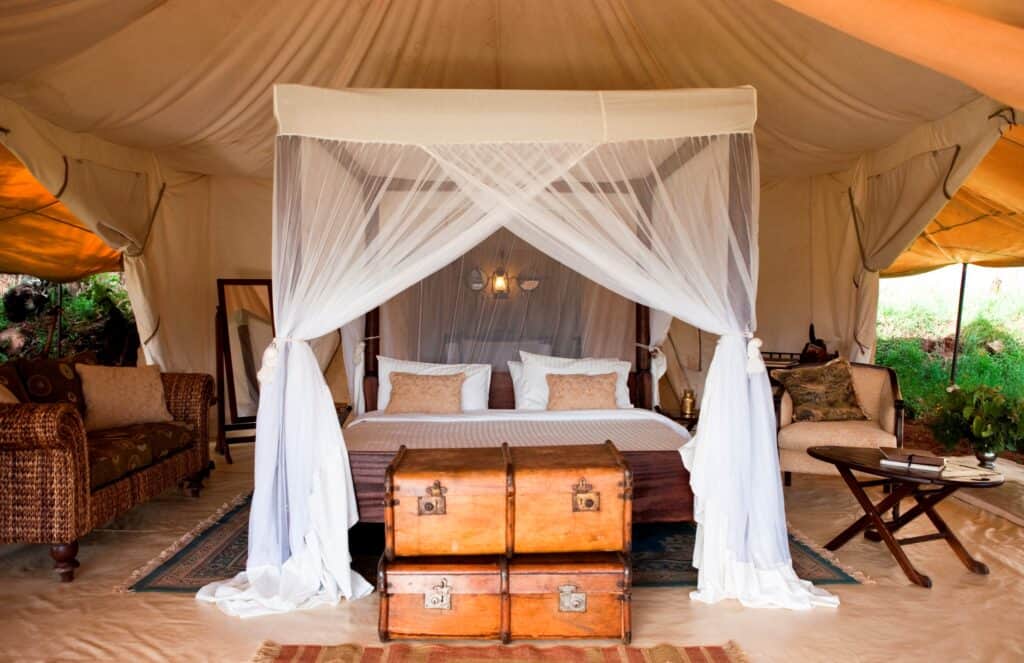
MoL: What are the living accommodations like in the 1920s Camp? And in Bush Villa?
C.C: The Camp has 11 large tents -4 luxury family tents, 6 luxury double tents, and a Honeymoon tent- all of the white canvas with large verandahs and beautiful bathrooms. They all have very elegant furniture in the 1920s style. The Camp provides services to compete with any high-standard boutique lodging, such as first-class food, Wi-Fi, a spa, as well as added value experiences, such as Maasai singing and dancing, the Maasai warrior school, running with the Maasai, and a beautiful swimming pool. What makes Cottars camp stand out is that staff stay for years (40 years for a couple of our staff!) and we all feel like a family.
The Villa is a single building with five ensuite bedrooms of beautiful design that is ideal for single groups of up to twelve people. It is for folks that treasure their privacy. The villa has its own 25m swimming pool and kitchen and comes with its own chef, staff and guides.
MoL: Can you tell us about Cottar’s dining experience? Do you hand-select the menu? Is the food locally sourced?
C.C: We have a chef named Bonny who, when he joined us, asked us simply not to constrain him with set recipes and menus ‘because he was an artist’! So we let him run with it and have fun testing his creations. Vegetables for these creations come from our own permaculture garden, meats are from the highland ranches where grade beef and lamb are bred for export, fish are from the Indian Ocean and Lake Victoria, and wines are from South Africa, Chile, France, Australia, Italy, and New Zealand.
MoL: How does Cottar’s engage with its local Maasai community and show its commitment to wildlife conservation?
C.C: We have always supported a local school, built classrooms, put in water supply and filters, and built a perimeter fence. We pay for four teachers’ salaries, and do bursaries for 41 in higher education institutions. For years, we have been providing ambulance services and medical clinics as well. We have also built a walk bridge over the sand river that used to sweep up to 5 people away per year, and we continue to provide assistance to have the landowners go through the legal procedures to acquire ownership of their land from the state.
Besides all that, we are the biggest employer in the group ranch, with 40 or so locals employed. We do lease 7 land units for tourism purposes as well as an airstrip and have negotiated to lease a further 7,000 acres on an annual basis for a wildlife conservancy.
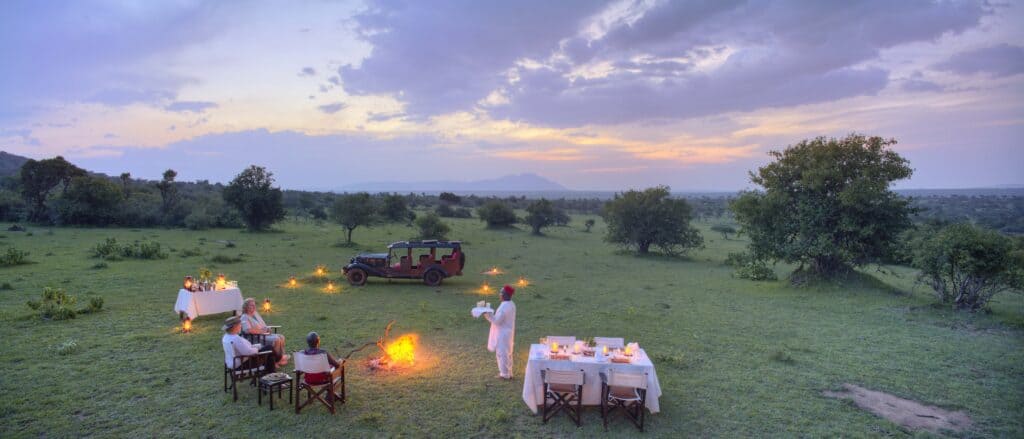
Sunset over the safari camp.
MoL: What has been a high point in the development of your company?
C.C: I suppose it is when our guests with high expectations tell us we have met or exceeded their expectations.
MoL: Is there an animal you like to spot the most?
C.C: Bateleur eagle. It is on the wing more than any other raptor with a full awareness of everything happening in a huge area of land. The eagle hunts spectacularly efficiently and successfully, and lives a long time. It doesn’t scavenge others’ kills, and it has a very proud demeanor.
MoL: Where do you look for inspiration or go for a peace of mind and spirit?
C.C: Just walking alone for an hour in the hills behind camp… or being with my family.
MoL: We find that people who make beautiful things are more likely to prioritize the importance of quality of life and life balance. Do you spend much time creating a beautiful home?
C.C: Yes, the villa is our home, and we have another in Nairobi, both of which Louise has decorated.
MoL: What is the best advice you’ve ever received, and from whom?
C.C: “Marry that woman,” my dad said to me.
MoL: Your most memorable safari story to share around the campfire?
C.C: The “I got away from this pissed-off elephant or that mad buffalo!”
MoL: What is your future vision for Cottar’s Safari Service?
C.C: Focus on what we do best, which is keeping true to ourselves, remembering that every guest is part of the family while on safari, and every employee is too. Remembering that ‘safari’ is the ‘journey to the destination’. Meanwhile, we shall try to find new ways to make the business more financially viable through endorsing safari products, clothing and equipment, or expanding into new areas. In 2019, we shall be celebrating our 100 years in the safari business -the oldest safari company in Africa- with a book, a film, and events around the world.
Photography courtesy of Cottar’s Safari Service

FORESTIS is a luxury, eco-conscious retreat nestled in the beautiful Dolomite Mountains of Italy.
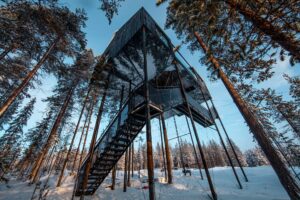
How Kent Lindvall and Britta Jonsson-Lindvall created eight unique Swedish tree houses, interweaving design and sustainability.
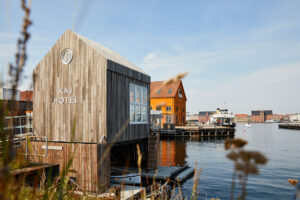
KAJ Hotel is a sustainable, simple two- to four-person houseboat hotel located in the Holmen neighborhood of Copenhagen, Denmark.